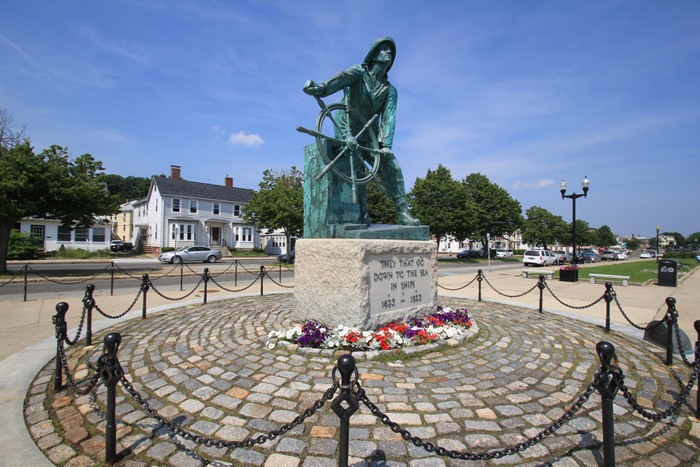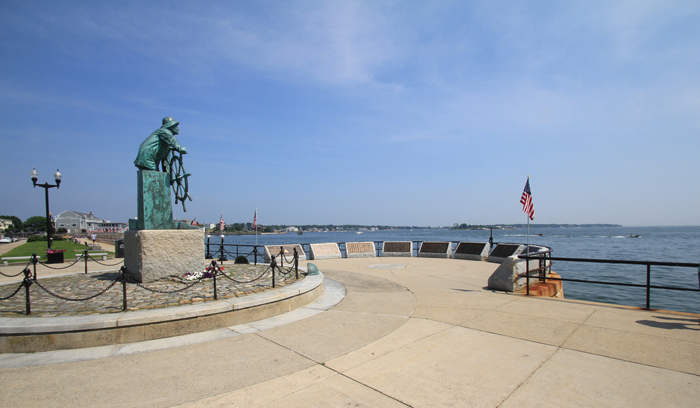Each year thousands of visitors to Gloucester take pictures at the fisherman statue on Stacy Boulevard. The statue is a nationally recognized landmark and an imposing sight, as it overlooks the harbor every day of the year. Viewing it is as meaningful to your Gloucester visit as anything else you’ll see.
The idea for the statue was conceived by a committee that first met in 1923. They wanted to prepare for the celebration of Gloucester’s 300th anniversary in 1925 and to create a permanent memorial to fishermen lost at sea. The committee held a design contest, which was won by sculptor Leonard Craske. The statue, sculpted of bronze, was installed in 1925.
The inscription is a portion of psalm 107:23 of the King James Bible; “They that go down to the sea in ships, that do business in great waters;”
Over ten thousand Gloucester fishermen have been lost at sea while earning their living. Before the invention of the radio and radar, fishermen would have little or no advance warning of an approaching storm. In the schooner fishing days, the only way back to port was by sail-a treacherous and often-fatal journey. During the World Wars, additional tragedies occurred when Gloucester fishing vessels were attacked or destroyed by German submarines. Often tragedies occur during rough winter weather when the sea spray ices up, making the boats become heavier and heavier. The fishermen chop off the ice with axes, but not always quickly enough to prevent the boats from sinking.
Gloucester became America’s #1 fishing port because it had three natural advantages.
1. It faced southwest, providing protection from winter storms, which come from the northeast, thus the name “Nor’ Easter” for such storms .
2. It had deep water, which is needed for large, heavy ships.
3. It was close to rich fishing grounds such as Stellwagen Bank and Jeffrey’s Ledge, which will so full of Cod, it was said that you could walk across them.
Sorry, no records were found. Please adjust your search criteria and try again.
Sorry, unable to load the Maps API.

